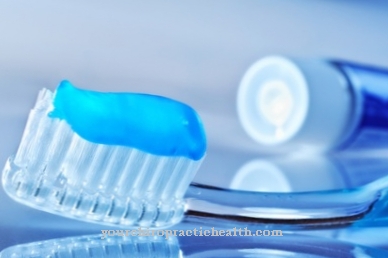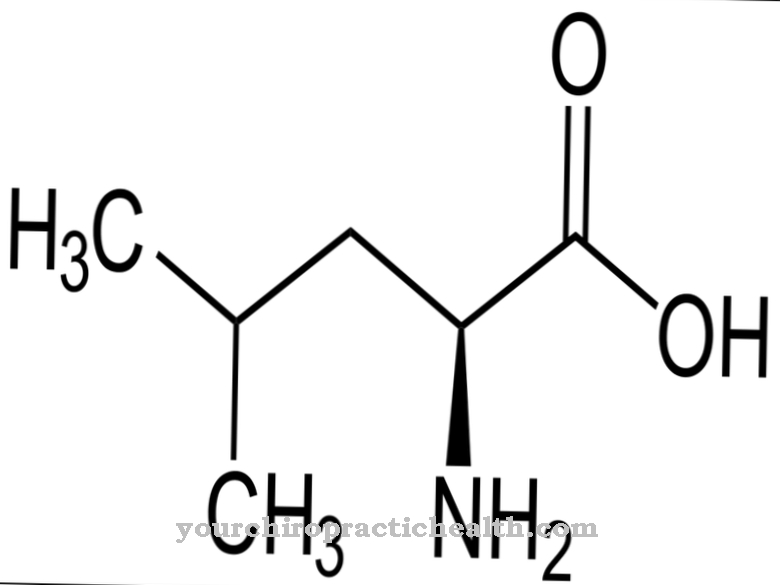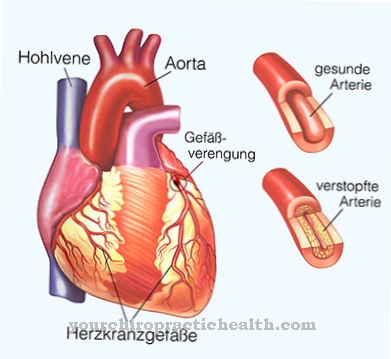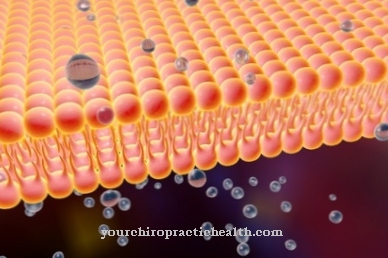Deodorants are used to prevent increased perspiration, especially in the armpit area, through a narrowing effect on the sweat glands, and to avoid unpleasant odors through bactericidal active ingredient components. In addition, existing odors are masked by perfumed deodorants. This triple effect is intended to effectively counteract the problem of sweat stains on items of clothing in the armpit area and the unpleasant body odors caused by bacterial decomposition.
What is deodorant?

Under the term deodorant, colloquially also simply as Deodorant refers to a body care product that is intended to prevent excessive perspiration and unpleasant odors in the armpit area due to bacterial decomposition of sweat.
While sweat glands are distributed over the entire skin and the secreted sweat is only used for cooling purposes and is almost odorless, there are also many scent glands in the armpit area, which depending on the emotional state such as e.g. B. fear, anger or sexual excitement emit special odorous substances.
While the sweat secreted for cooling purposes consists almost exclusively of water, the sweat secreted by the scent glands provides bacteria with enough nourishment to produce bad smells as waste products by decomposition.
There are therefore basically two ways of preventing excessive sweat and odor formation in the armpit area. On the one hand, certain active ingredients in a deodorant can narrow the channels of the scent glands or even completely block them (antiperspirant) in order to make secretion more difficult. On the other hand, bactericidal substances in the personal care product can largely prevent the decomposition of sweat by killing the bacteria. In addition, perfumes in many deodorants cover any unpleasant smells with pleasant smells.
Shapes, types & types
The variety of deodorants on offer, most of which also contain antiperspirant complex aluminum compounds, is almost unmanageable. From a technical point of view, they can mainly be distinguished by the physical nature of their application. Deodorant sprays are most widely used in Germany. It is very easy to use, as all areas in the armpit are wetted and there is no direct contact between the deodorant container and the skin. Deodorant sprays usually contain a combination of astringent aluminum compounds to narrow or block the sweat ducts, bactericidal substances to kill bacteria and fragrances to cover up bad smells.
Deodorant rollers are also offered in a wide variety. At the top of the container, they contain a large ball to which the deodorant liquid adheres and is released through direct skin contact to the "overrun" areas of the skin. The deodorant crystal is less common. It has a high proportion of aluminum salts, is odorless and does not contain any fragrances or preservatives. Deodorant sticks, deodorant creams and deodorant powders are also offered.
Structure & functionality
Combination preparations, which are often offered as deodorant spray or deodorant roller, contain a mixture of astringent substances as the first main component that narrow or even clog the sweat ducts in order to physically prevent excessive sweating. The main components of the astringent substances are usually a complex of aluminum chlorohydrates and an aluminum-zirconium-tetrachloro-glycine complex (ZAG). Propantheline bromide is also usually contained as an active ingredient.
The second active ingredient complex consists of bactericidal substances, mostly bacteriostatics that inhibit the growth of bacteria or bactericidal substances that can kill bacteria. The bacteriostatics and bactericidal substances used by the individual manufacturers are very different. In some cases, natural substances extracted from plants are also incorporated.
The effectiveness and tolerance of the substances in a deodorant cannot be predicted in advance, so that trying out (self-testing) different products from different manufacturers usually makes sense. Some deodorants are offered either perfumed or non-perfumed as some people are allergic to the perfume or do not like the scent. Frequently used odor maskers are perfume oils, which combine with the individual endogenous odor formers to form a special odor note and classically mask unpleasant sweat odor.
Deodorants often also contain so-called odor absorbers. These are substances that can enclose the odor-forming molecules so that they can no longer be perceived by the odor receptors in our nasal mucous membrane.
You can find your medication here
➔ Drugs against sweating and sweatingMedical & health benefits
When assessing the medical and health benefits of classic deodorants, it must be taken into account that the active ingredients they contain have almost exclusively a symptomatic effect, i.e. that they cover up or capture the odors but cannot prevent their development themselves.
Above all, the astringent components in the deodorant, which constrict the glands, not only have positive effects, as the secretion of sweat through the special scent glands is sometimes used by the body to dispose of waste and toxins. Preventing perspiration can thus lead to an artificially induced build-up of these substances, which can trigger inflammation. Deodorants that address the causes of excessive perspiration in the armpit area are not known.
Experts are discussing the danger of aluminum compounds, as the compounds enter the surrounding tissue via the sweat ducts and can trigger reactions in the lymphatic system. Aluminum is one of the heavy metals and can cause serious damage to the body. The absorption of aluminum salts is also drastically increased as soon as a deodorant is applied to the skin B. was injured with microcracks during the removal of armpit hair. In the meantime, lists of deodorants that do not contain aluminum additives can be found in some drugstore branches.
The other active ingredient components in deodorants are also not tolerated by everyone, but can trigger allergic skin reactions. If such skin changes occur, you should refrain from using a deodorant for some time and then try another product with different active ingredients.







.jpg)



















